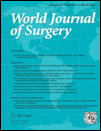Ultrasound-Guided Vacuum-Assisted Excision to Treat Intraductal Papilloma
Ping He and Yu-Tao Lei are co-first author.
Copyright comment: Springer Nature or its licensor (e.g. a society or other partner) holds exclusive rights to this article under a publishing agreement with the author(s) or other rightsholder(s); author self-archiving of the accepted manuscript version of this article is solely governed by the terms of such publishing agreement and applicable law.
Abstract
Background
To evaluate the value of ultrasound-guided vacuum-assisted excision (US-guided VAE) in the treatment of intraductal papillomas, including intraductal papillomas with atypical ductal hyperplasia (ADH), and to evaluate the lesion characteristic features affecting the local recurrence rate.
Materials and methods
Between August 2011 and December 2020, 91 lesions of 91 patients underwent US-guided VAE and were diagnosed with intraductal papilloma with or without ADH. The recurrence rate of intraductal papilloma was evaluated on follow-up US. The lesion characteristic features were analyzed to identify the factors affecting the local recurrence rate.
Results
The local recurrence rate of intraductal papillomas removed by US-guided VAE was 7.7% (7/91), with the follow-up duration 12–92 months (37.4 ± 23.9 months). Of the 91 patients, five cases diagnosed as intraductal papilloma with ADH did not recur, with the follow-up time 12–47 months (26.4 ± 14.4 months). There were no malignant transformation in all 91 cases during the follow-up period. All 7 patients recurred 7–58 months (22.8 ± 19.2 months) after US-guided VAE. There were no significant differences between the non-recurrence and recurrence groups in terms of age, side, distance from nipple, lesion size, BI-RADS category, with ADH, or history of excision (p > 0.05).
Conclusions
US-guided VAE is an effective method for the treatment of intraductal papilloma, including intraductal papilloma with ADH. It avoids invasive surgical excision, but regular follow-up is recommended to prevent recurrence or new onset due to multifocality. Any suspicious lesions during the follow-up should be actively treated.




